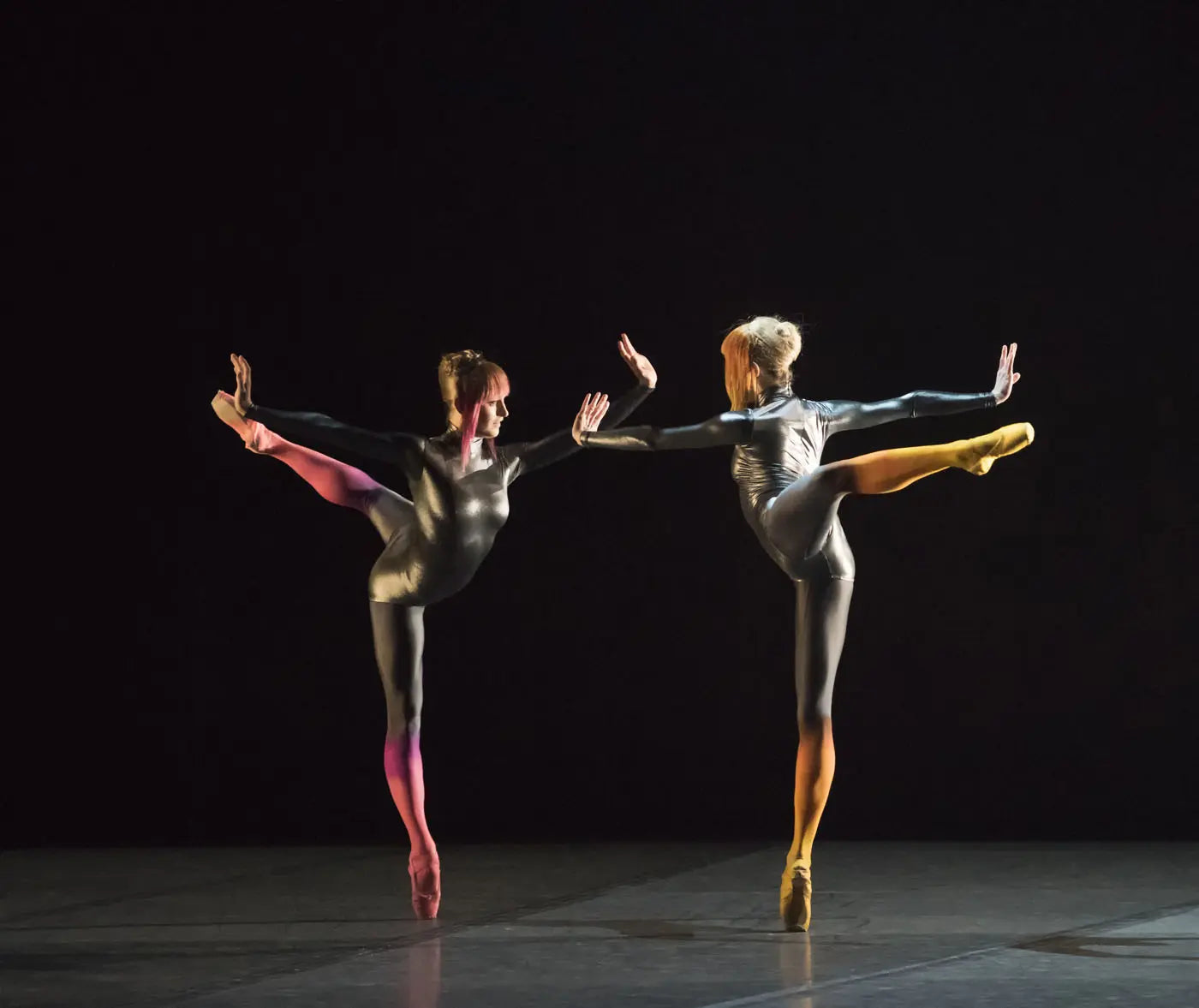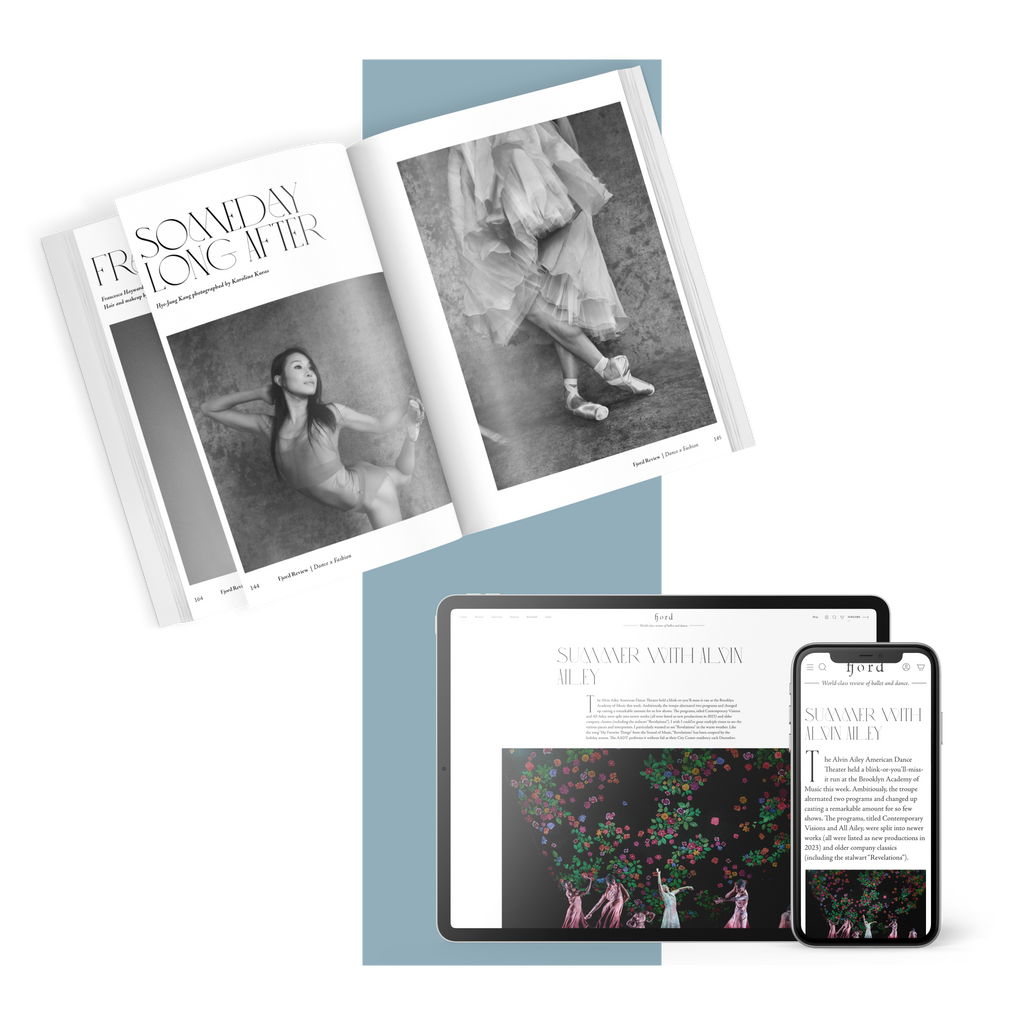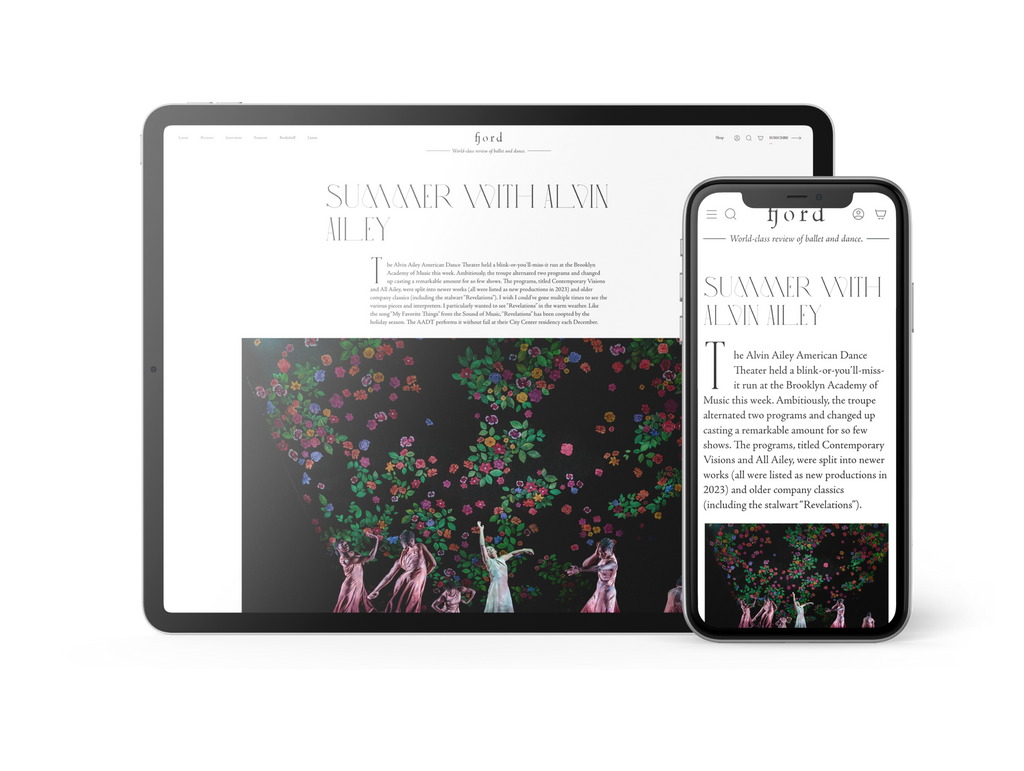Yet throughout the work, it is the journey of a single woman that also catches our eye. Opening the piece by walking backwards through a stark beam of light, this performer stands out in her blue-grey dress against the flurry of men and women racing around her, until the moment she seemingly finds her equal. As the work unfolds, so too do these characters grow and shift, gradually taking on the apparel of the corps, as the corps in turn parades across the space now donning the fancier dress she once adorned. Strikingly, the work begins and ends similarly, with the stage clearing out and the familiar beam of light returning to the now motionless walls. Here stands our heroine, clothed in her new simple attire. We see now that she has undergone a full transformation, retreating back into the beam of light with quiet dignity.
After an intermission, the program resumes with Norbert Vesak’s “Belong.” Though brief in comparison to its production counterparts, “Belong” leaves a lasting impression. Performed expertly by Anaïs Chalendard and Patrick Yocum, the work impressively utilizes acrobatic partnering to convey a heightened sense of affectionate ecstasy. As if discovering each other and the world around them for the first time, we are reminded of a contemporary telling of Adam and Eve—a narrative further developed as the two both emerge and end in an entanglement of limbs encircled by dark abyss.
By far, the highlight of “Mirrors” was its triumphant third work, the world premiere of Yury Yanowsky’s “Smoke and Mirrors.” A visual and choreographic treat, “Smoke and Mirrors” seemingly has no beginning and no end, living in its own mysterious world with the audience merely peeking in.
As the curtain rises, we are immediately immersed in an ancient land of mist and ruins. Three goliath cinderblock columns loom upstage as the women of the piece are led, counterbalanced, by the men. The pairs regally cross the plane, with more emerging from the heavy fog that fills the backdrop. The visual is simply breathtaking.
From here the work explodes into a riveting exploration of a long lost world—at times evoking the power of an empire conquering all in its wake, at others echoing modern-day war in the middle east. Yanowsky’s intricate use of purposeful arms, gestures, and fists allows the dancers to truly perform full-bodied, while the unexpected addition of hand grips on the women’s torsos provides a new form of partnering. Soon, a distorted radio call beckons ominously as the dancers carry each other as if dragging the wounded off a battlefield. As the lights dim and the dancers dash off into the mist, we find ourselves wishing for more, as this monumental city and its fighters disappear.
All aspects of this new work ought to be applauded, from Charles Heightchew’s creative costume design to the scenic, lighting, and musical elements (Benjamin J. Phillips, John Cuff, and Lucas Vidal, respectively), which so masterfully elevated Yanowsky’s vision.
The final piece of the evening, Karole Armitage’s “Bitches Brew,” proffered a visual personification of the music at hand. Set to the delightfully chaotic jazz of Miles Davis, “Bitches Brew” begins with a solo performer, dressed in sleek black, sounding out each roll of the snare drum with equally percussive phrase work. The opening feels reminiscent of an old film noir—the soloist lingers under the foggy glow of an unseen streetlamp, while the exposed back wall of the theater gives the audience an industrial, cityscape ambience. Yet soon, this solitude is abruptly shattered, as the melody sets into motion a colorful crew of pointe-clad dancers sporting pleather leotards and legs dipped in neon pinks, purples, and yellows.
From there, the work spirals into a frenzy of duets, quartets, and seemingly disparate solos, performing choreography that is at once both improvisational in appearance, yet meticulously timed in cadence with the score. From finger snapping to greeting each other with comedically casual skips, it is as if these dancers are the colorful free-form music notes, themselves, set free from the pages of Davis's score.
Unfortunately, this closing number was not without its flaws. Its concept, though initially novel, soon became stagnant as the work maintained its repetitive pacing and musically-prompted structure. One moment did attempt to break the mold, as the opening soloist returned to perform an intriguing duet, blindly led by another dancer who eerily tied the soloist's long dark hair across her face, effectively concealing her vision and prompting partnering through trust. Had more moments such as these arisen, the work would have continued to build, yet instead it left one curious about the choice to introduce such a singular moment.
Ultimately, “Bitches Brew” accomplished exactly what it set out to do, and the company performed it well—yet Boston Ballet’s choice to place it at the end of the production was a disservice. While the first three works of the evening beautifully complemented one another, this final work felt curatorially out of place, especially on the heels of such a visually and emotionally epic third work. Perhaps treating “Bitches Brew” as an opening act to “Mirrors” would have helped the audience better appreciate its subtleties—or better yet, presenting it alongside an entirely different lineup of contemporary works.




comments